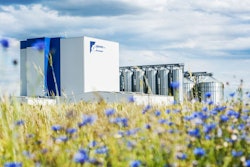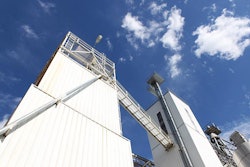
New BAP guidelines for aquafeed emphasize responsible selection of feed ingredients
With more sustainable and socially responsible options now on the market, aquafeed mills will have to pay closer attention to their ingredients to stay in line with global guidelines.
The third and latest version of the Global Aquaculture Alliance’s best practices standards for feed mills, released in mid-June, establishes new guidelines for the selection of ingredients, and for mill biosecurity. To maintain compliance with the standard, mills must source at least 75% of their marine feed ingredients from certified sources by 2025. Half of all soy used must also come from certified sources to avoid deforestation.
The previous Best Aquaculture Practices (BAP) set the minimum inclusion of certified marine ingredients at 50%, and did not set a standard for certified soy, according to Dan Lee, BAP standards coordinator for the Global Aquaculture Alliance. The new guidelines will require a concerted effort by feed manufacturers in some parts of the world, he said.
“In some parts of the world, it’s already 75%,” he said. “But there are some parts of Asia where the amount of certified marine ingredients is pretty low. So we have set a bar that is a major ask for some parts of the world.”
To make the standard more attainable, the BAP gives manufacturers until 2025 to build up to the 75% certification guideline. All other standards in the guideline take effect within a year.
With some runway to go on, Lee said he believes the 75% represents “a significant bar, but it is achievable, and represents improvements made in the availability of certified marine ingredients.”
In addition to the certification standards, the new BAP sets guidelines related to feed safety, biosecurity, and the use of antibiotics.
“We’ve more than doubled the number of requirements related to feed safety,” he said.
The new biosecurity standards reflect government regulations already in place in some markets, and focus primarily on excluding critical antibiotic drugs, risk assessment and good management practices, and verification of ingredient origin, Lee said.
While these new standards bring the BAP up to speed with best practices around the world, Lee said there is a good chance the guidelines will grow increasingly strict in the future. Ingredient traceability and biosecurity, in particular, remain evolving topics of conversation, and the expectations around social responsibility and certification will tighten as these ingredients become more widely available.
“The requirement for certified soy, for 50% of that to be certified, that will have to come higher,” Lee said. “That’s a big achievement to get certified soy to 50%, but what about the other 50%? Why can’t we be happy with 100% of soy?”
But such standards can’t progress faster than the availability of applicable ingredients, Lee said.
Future standards will also make strides toward reducing the industry’s environmental footprint, especially carbon emissions, Lee said. The new BAPs requirement that feed manufacturers begin to log their energy and water consumption is a step toward eventually requiring lifecycle analysis, he said.
“The existing requirement is no big deal,” he said, “but it will be the starting point, and that will be part of a whole bigger picture.”














